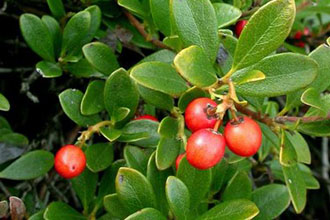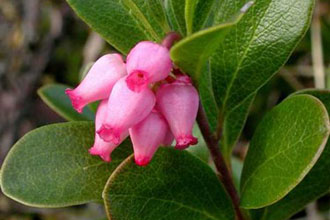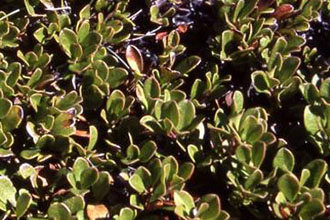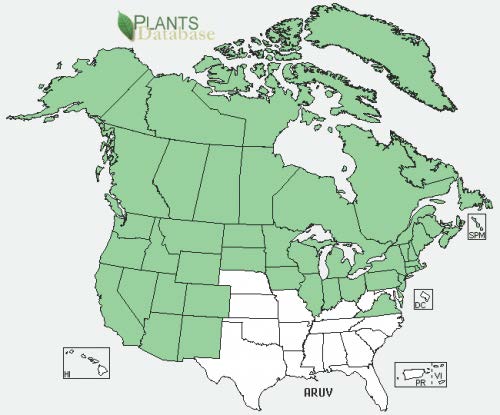USFS Plant Database
Kinnikinnick is a seral, shade-intolerant species often found in seral, open pine forests. It grows best in high light situations and becomes very rare when shade becomes intense. In the open, kinnikinnick forms a compact and intricate mat; under a canopy, long, thin trailing stems creep along the forest floor. Shoots are more upright under partial shade than in the open... Kinnikinnick pioneers on dry rock outcrops in the Pacific Northwest. It is an integral part of succession on dry, stable, sand dunes in the Great Lakes and along both the Atlantic and Pacific coasts. On Lake Michigan sand dunes, it invades bunchgrass communities and thrives under slow burial by drifting sand that covers part of the plant.
Smoking the leaves as a tobacco substitute is the most widely mentioned human use of kinnikinnick. However, medical uses of kinnikinnick leaves were recognized by early Romans, Native Americans, and settlers. At the present, kinnikinnick leaves are used medicinally in Poland and many other countries. The most important medical use of the leaves is for treating urinary tract disease. They can also be used to make a highly astringent wash and as a vasoconstrictor for the endometrium of the uterus. Some Native American tribes powdered the leaves and applied them to sores. For medical use the leaves are best collected in the fall.
The berrylike drupes have dry, insipid, and tasteless flesh when raw but are useful emergency food. Native Americans fried them or dried them and used them in pemmican. The fruit is also used in jelly, jam, and sauces. In Scandinavia, kinnikinnick is used commercially to tan leather.
The currently accepted scientific name of kinnikinnick is Arctostaphylos uva-ursi (L.) Spreng.
Kinnikinnick is most often a dominant understory species in open pine forests under jack pine (Pinus banksiana), lodgepole pine (P. contorta), limber pine (P. flexilis), ponderosa pine (P. ponderosa) or pitch pine (P. rigida).
In British Columbia kinnikinnick indicates sites that are moisture deficient because of rapid drainage. (Plant Database)



